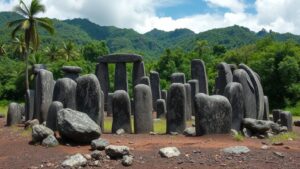Challenges in preserving artifacts found in extreme climates.
Challenges in Preserving Artifacts Found in Extreme Climates
Artifacts unearthed in extreme climates–whether frozen tundras, arid deserts, or humid rainforests–pose unique preservation challenges. While these environments can offer unparalleled insights into historic cultures and civilizations, they also create conditions that can rapidly degrade materials. Understanding these challenges is critical for archaeologists, conservators, and historians who seek to protect and maintain these invaluable relics of the past.
The Impact of Temperature Extremes
Extreme temperatures can initiate chemical and physical changes in artifacts made of organic and inorganic materials. For example, artifacts found in the icy reaches of the Arctic, such as those discovered during the 2006 excavation at the site of the ancient Inuit village of Ipiutak (located in Alaska), often suffer from thawing conditions that can lead to deterioration. The freezing temperatures typically slow decay, preserving items like wood and bone, but once these artifacts are exposed to warmth, they can rapidly degrade.
- The permafrost in the Arctic, while preserving artifacts for centuries, can release them into warmer conditions, ultimately leading to rapid decomposition.
- Artifacts from desert climates, such as those found in Egypt, can face deterioration due to temperature fluctuations and can become brittle over time.
Humidity and Moisture Effects
Humidity levels significantly influence the preservation of artifacts. High humidity can promote mold growth and increase the likelihood of corrosion. An example can be found in the Amazon rainforest, where high moisture levels and dense vegetation contribute to a rich environment for microbial growth, leading to the rapid infestation of organic artifacts.
- In Guatemala, a study of Mayan artifacts stored in humid conditions revealed significant mold degradation after just a few months.
- Artifacts such as feathers and textiles are particularly vulnerable to rot caused by high moisture levels, destabilizing fibers and colors.
Soil Composition and Environmental Factors
The composition of soil in extreme climates is another essential factor in artifact preservation. For example, the alkaline soils of the desert can cause metal artifacts to corrode, while acidic conditions in tropical regions can mineralize organic components, leading to overall deterioration. The Lake of the Dead, a pristine site in Lower Siberia, exemplifies how a unique combination of soil composition and environmental factors can lead to the preservation of leather artifacts for thousands of years, while similar items in different conditions may degrade swiftly.
- The unique chemistry of saline soils in some coastal areas can lead to rapid corrosion of metal items found in shipwreck sites.
- Acidic peat bogs can preserve wooden artifacts (like the famous Tollund Man in Denmark) but can be incredibly destructive to surrounding materials.
Rapid Environmental Changes
Rapid climatic changes also pose a significant threat to artifact preservation. thawing of permafrost due to climate change has released numerous ancient objects, including tools and clothing, into more temperate environments where they are susceptible to decay. A stark example is the recent discovery of artifacts from the Arctic in 2016, which showcased Inuit hunting gear that had been buried for centuries but emerged due to melting permafrost.
Also, deserts experiencing scarcer rainfall can trigger the formation of salt crystals that infiltrate porous artifacts. As the crystals grow, they can disintegrate the materials. As a result, timing and location of excavations must be coordinated carefully to avoid loss.
Preservation Techniques and Innovations
Despite these challenges, archaeologists and conservators employ several innovative techniques to preserve artifacts found in extreme climates. Controlled environments, advanced packaging materials, and climate-hack technologies are changing the future of preservation. For example, using silica gel packs in storage containers can help to stabilize humidity levels and prevent mold growth.
- Cold-storage facilities developed for similar purposes, ensuring items from tropical sites can remain cool while they are restored.
- Group of researchers at the University of Alberta has developed a method of freeze-drying artifacts to ensure they remain intact when removed from permafrost.
Conclusion and Actionable Takeaways
Preserving artifacts from extreme climates is a complex feat that requires a blend of understanding, innovation, and respect for the natural conditions that created these finds. As climate change alters these environments rapidly, archaeologists must adapt their strategies for preservation. The challenge remains current, as collaborative efforts between conservators, governments, and communities will enhance our ability to safeguard these artifacts for future generations.
For interested individuals looking to become involved in preservation efforts, here are some actionable takeaways:
- Participate in local archaeological organizations to understand the significance of artifact preservation.
- Support policies aimed at climate preservation that can indirectly protect archaeological sites worldwide.
- Engage in community initiatives focused on preserving local heritage and educating others about the importance of artifacts.


